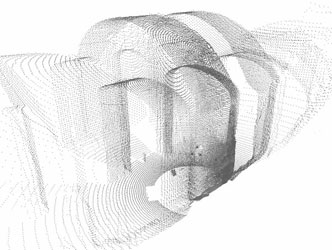|
This study presents preliminary results from La Subterranea, an ongoing research project which takes its name from a tunnel and viaduct system running underneath and through the city of Guanajuato, Mexico. As riverbed, vehicular thoroughfare, and the historical back alley to the city, La Subterranea has evolved in a state of tension with the city above. Its use, form, and place has shifted over time, registering changing attitudes towards hygiene, shifts in transportation and hydrological infrastructure, and alterations to the natural topography. At present, La Subterranea is embraced as uniquely embedded cultural capital—contributing to the city’s designation as a World Heritage Site in 1988—and as a practical solution to the transportation problems in the city center. The authors traveled to Guanajuato and employed High Definition Survey equipment to assemble a precise three-dimensional model of approximately 2 kilometers of the length of La Subterranea. This study has resulted in the first methodical and accurate mapping of this system.
While Guanajuato and La Subterranea co-evolved into the interwoven system it is today, their contingent development has produced spaces of uncertain allegiance—neither wholly of the subterranean nor wholly of the city proper. The result is an uneven morphology, a subtle incongruity of form and fabric, where moments of correspondence give way to moments of complete misalignment. The result is an interference pattern in which the overlay of the two systems at times shows correspondences of alignment and access and at times a counter patterning of seemingly misregistered street axes and criss-crossing vectors. In this erosion and misalignment, then, lies the fundamental ambiguity of this system. La Subterranea is simultaneously an artifact and a void, a presence and an absence.
|
|
|

